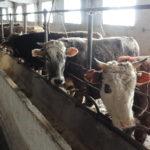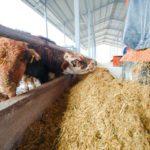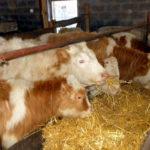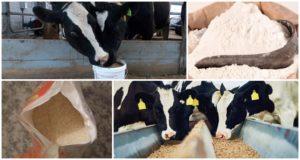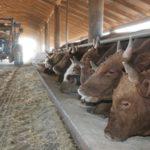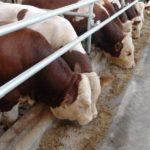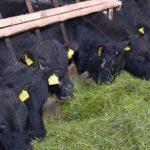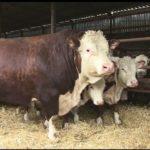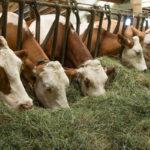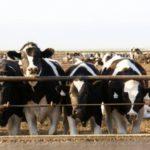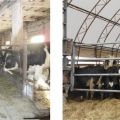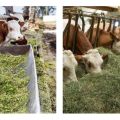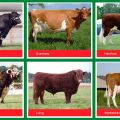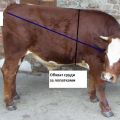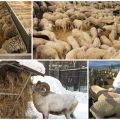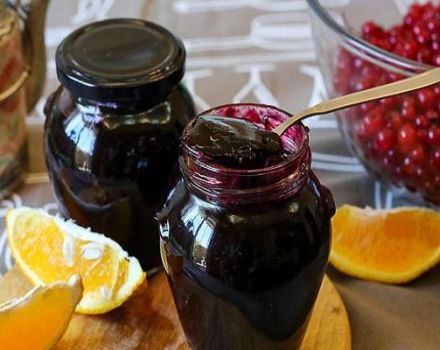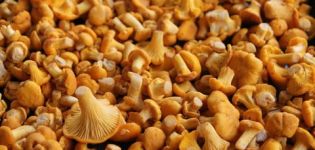The most effective diet for fattening gobies for meat at home
Fattening of young bulls for meat has its own characteristics. They try to feed animals up to 3 months only with whole milk. Then they gradually switch to plant food (hay and grass), give more grain forage, root crops. For better weight gain, feed additives are included in the diet. The selection of feed depends on the financial capabilities of the farmer. The better the grass, hay and forage, the faster the bulls recover.
Features of feeding gobies
The fattening of bulls for meat begins from the moment they are born. Their weight during this period is 30-45 kg, and by the time of slaughter (at 12 months) the weight should be equal to 500-700 kg and more. Newborn calves up to 3 months of age feed on mother's milk (first from teat drinkers, and in the second week of life - from a bucket).
An accelerated metabolism takes place in the body of young animals, all organs and tissues grow intensively. During this period, the bulls should eat their fill. They are given whole milk (not diluted), increasing the rate from 300 grams to 1-2 liters per feeding. The animals are fed at first 5 times a day, later 3 times a day.
In the first months of life, calves are able to gain 700-900 grams in weight, if they do not save on feed. Of course, future productivity indicators depend on a good start (good nutrition, quality feeding). In the first months of life, calves begin to taste grass, hay, and grain mixtures.
However, it is possible to transfer gobies to plant food, excluding milk, only at 4 months of age.
Until slaughter, cattle are fed with grass or hay. It is the main food for ruminants and contributes to the normal functioning of the stomach. As a supplement, gobies can be given vegetables, grain forage, compound feed, silage and supplements for rapid weight gain.

Feeding types
Animals are raised (fattened) in two ways: pasture-stall and stall. Each feeding method has its own advantages.
In a quick way
With accelerated fattening, the bulls are transferred to grass or hay at 3 months and daily grain forage or pulp (compound feed) is given as top dressing, each time increasing the rate. Some farmers give the animals boiled potatoes. As a rule, gobies are taught to feed on the farm. A more effective result is obtained when using feed additives.
In winter, the animals are kept indoors and fed three times a day with hay, grain forage, and root crops.
Stoilovy
You don't need to graze the bulls in the meadow, but keep them in stalls (fattening). True, you will have to feed the calves at least 3 times a day. Animals should eat their fill, that is, not stand hungry on a leash all day. Feed is given depending on the age of the bulls.
Diet for gobies
The diet and feeding rates of bulls depend on the age of the animals. You need to start with milk (colostrum). A new feed can only be introduced when the calves reach a certain age and their stomachs are ready to assimilate roughage.
Up to six months
In the first minutes after birth, calves should receive colostrum, which contains a huge amount of antibodies. Gobies are born with immature immunity. It is colostrum that allows you to get immune protection against dangerous diseases and to improve the functioning of the stomach. You can feed the bulls with a bottle with a teat. On large farms, they practice feeding calves with colostrum from different cows. This prefabricated product is healthier because it contains more antibodies.
The milk consumption rate is growing every day. Initially, the calves drink half a liter at a time. Until the end of 2 weeks, this figure increases by 4 times. A month-old goby drinks 1-2 liters of milk per feeding. In total, he is fed three times a day. If there is no natural milk, calves can be fed substitute or skim milk in the same amount.
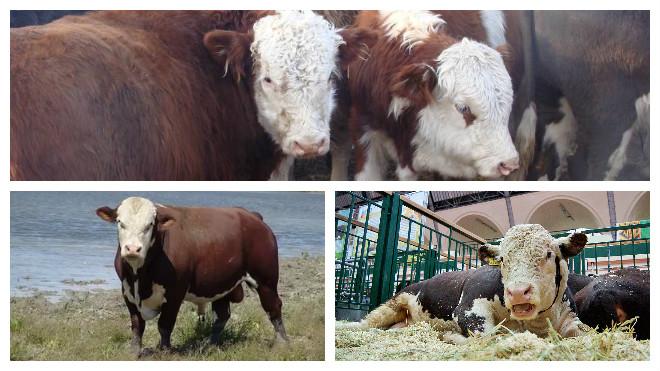
In addition to milk, gobies are given fresh water (from 1 liter to half a bucket). From the second month of life, for quick fattening, small amounts of oatmeal, compound feed, and grain are introduced into the diet. To accustom animals to begin with 100 grams of new feed. Then the rate of concentrated feed is increased to 1.3 kg (at 3 months) and 1.9 kg (at 6 months) per day.
In the process of raising and fattening gobies (starting from 4 months), special attention is paid to their pasture grazing. Fresh air and succulent grass improve the well-being of the calves, promote good appetite and fast weight gain. You can fatten the bulls within the calf shed, that is, keep them in a stall. The main thing is that the animals receive the whole range of feed necessary for faster weight gain.
The most useful vegetation is legume-cereal hay. Initially (at 2 months), calves eat 0.5-1 kg per day, with each week the consumption rates grow. Gradually, the animals are transferred to the grass. First, they give dried, later - succulent legume-cereal vegetation. It is recommended to graze young bulls on young grass 10-15 cm high. At 3 months, calves eat 3-4 kg, at 6 months - 15-18 kg of grass per day.
After half a year
When calves are 6 months old, they can eat the same food as adult animals. The main food for fast-feeding bulls is grass in summer and hay in winter. The diet should contain vegetables, grain mixtures, compound feed, vitamin and mineral complexes, chalk and salt.
The goby eats 20 to 30 kg of grass per day. Grain mixture or mixed feed give 2-3 kg or more. The grass rate for an adult cattle is almost 55 kg. In winter, a calf, starting at 6 months of age, eats 5-20 kg of hay, 5-15 kg of silage per day. Animals gain weight well if root crops are present in the diet (3-7 kg per day). The calf drinks 1-2 buckets of water at a time.
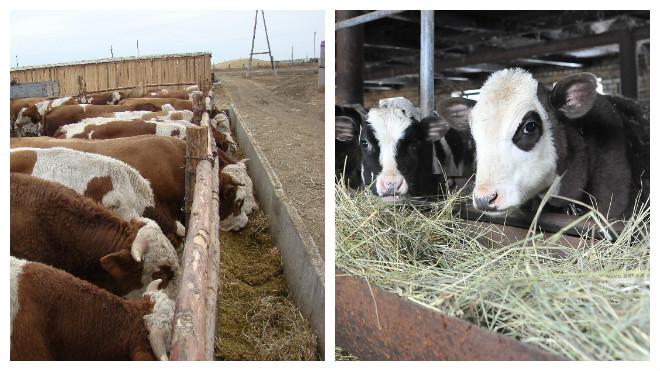
Intensive feeding of bulls for meat
In order to fatten the calf in a short time, you need to provide quality food and at the same time observe the daily nutritional norms. The intensity of weight gain depends on the breed of bulls.
For rapid growth and higher productivity, breeding animals of the meat type are bought at the age of 1 to 3 months. Gobies can be raised, then sold for meat. The main thing is to feed them often, animals should not starve and remain without food for a long time.At home (on your own farm), with proper feeding (selection of feed), you can achieve good results. A bull or cow before slaughter (up to 12-18 months) can gain 500-800 kg.
Diet for fast fattening of bulls for meat (table):
| Age (months) | Daily milk supply | Daily grass rate | Hay rate daily | Daily rate of crushed grain forage (barley and wheat) | Daily rate of probiotic ("Actisaf") added to grain fodder | Daily norm of vegetables |
| 1 | 6 l | — | — | — | — | |
| 2 | 8-9 l | 100-200 g | 100-300 g | 0.1 kg | — | 100 g |
| 3 | 8-12 l | 500 g | 500 g | 0.3 kg | 0.5 tsp | 300-500 g |
| 4 | 5 l | 1-3 kg | 1-3 kg | 0.7 kg | 1 tsp | 1 kg |
| 5 | 2 l | 6-10 kg | 4-5 kg | 1 kg | 1 tsp | 2 Kg |
| 6 | — | 15 kg | 6 kg | 2 Kg | 1 tsp | 3 Kg |
| 7 | — | 18 Kg | 7 kg | 3 Kg | 1 tbsp. the spoon | 4 kg |
| 8 | — | 20 kg | 8 kg | 4 kg | 1 tbsp. the spoon | 5 Kg |
| 9 | — | 22 kg | 9 kg | 5 Kg | 1 tbsp. the spoon | 5.5KG |
| 10 | — | 25 Kg | 10 Kg | 6 kg | 1 tbsp. the spoon | 6 kg |
| 11 | — | 27 kg | 13 Kg | 7 kg | 1 tbsp. the spoon | 6.5 kg |
| 12 | — | 30 Kg | 15 kg | 9 kg | 1 tbsp. the spoon | 7 kg |
What are the feed additives
For fast fattening, it is recommended that bulls add various additives to the feed. These preparations improve digestion and stimulate good appetite.
Antibiotics
With the help of antibiotics, calves grow and recover faster, and their body weight increases by 14 percent. As antibacterial drugs, bulls are prescribed "Bacitracin", "Batsilikhin 120", "Flavophospholipol", "Flavomycin".
In animals taking antibiotics up to 6 months of age, all parts of the stomach become enlarged. Gobies eat more and get better. However, over time, the response to drugs weakens. But with this method of feeding, bulls quickly gain weight.
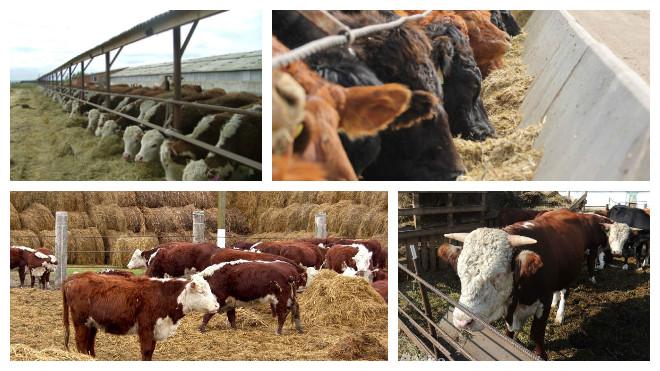
Prebiotics
To improve the functioning of the stomach and intestines, it is recommended to give prebiotics and probiotics to the bulls. These additives improve the digestion of food and strengthen the immunity of animals.
Probiotics (yeast or based on spore-forming bacteria) are living beneficial microorganisms that normalize the composition of the microflora of the digestive system.
Prebiotics are food additives that are found in food, in unrefined cereals, fruits, vegetables, bran, in pharmaceutical preparations (BAA). A special prebiotic "Prestarter" is produced for cattle, from cellulose with the addition of vitamins and minerals. The supplement is started at the age of one month.
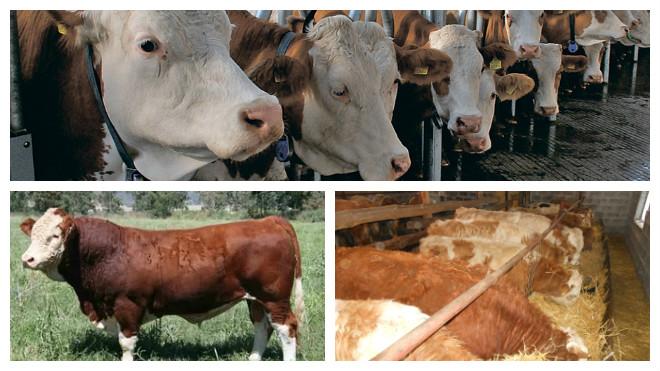
Cereals
For faster fattening, the bulls are given cereal and legume feed additives. Grain feed allows bulls to gain weight faster. Such complexes are completely ready for animal feeding and contain useful vitamins and minerals.
Biostimulants
The introduction of growth stimulants (Supermix, Krezatsin, Ivan Ovsinsky Korm) into the diet of calves will help to achieve fast feeding. Each type of biological product has its own consumption rate (depending on the age of the animal). Growth stimulants are given, starting from 2 months of life and up to the slaughter of bulls.
